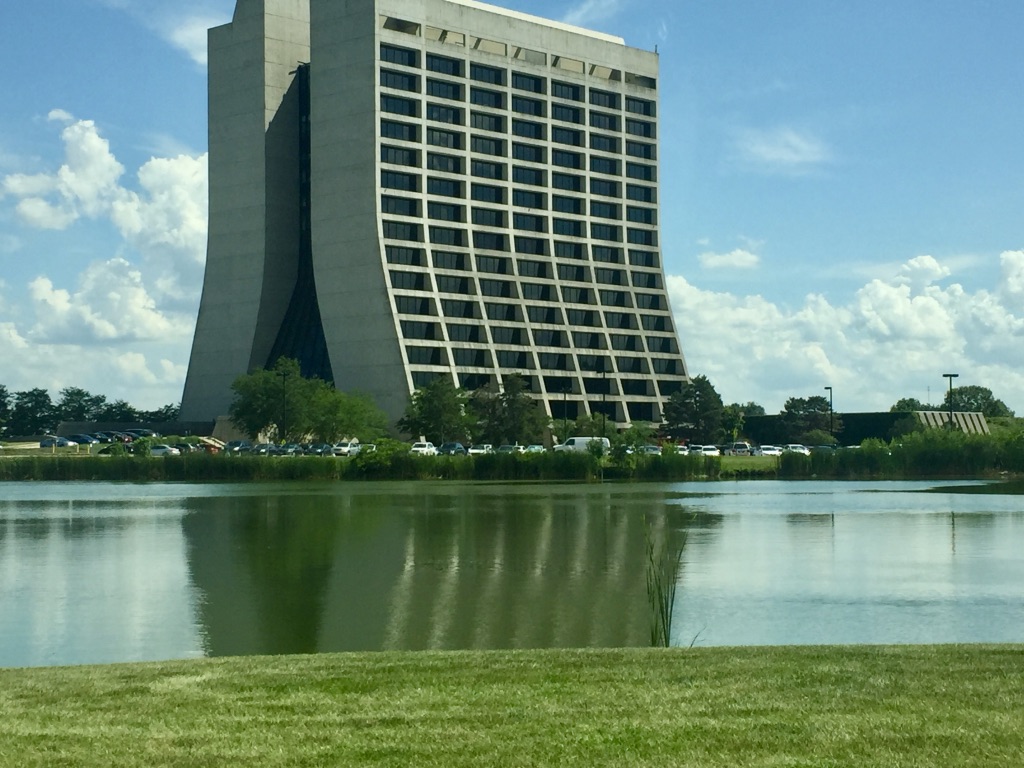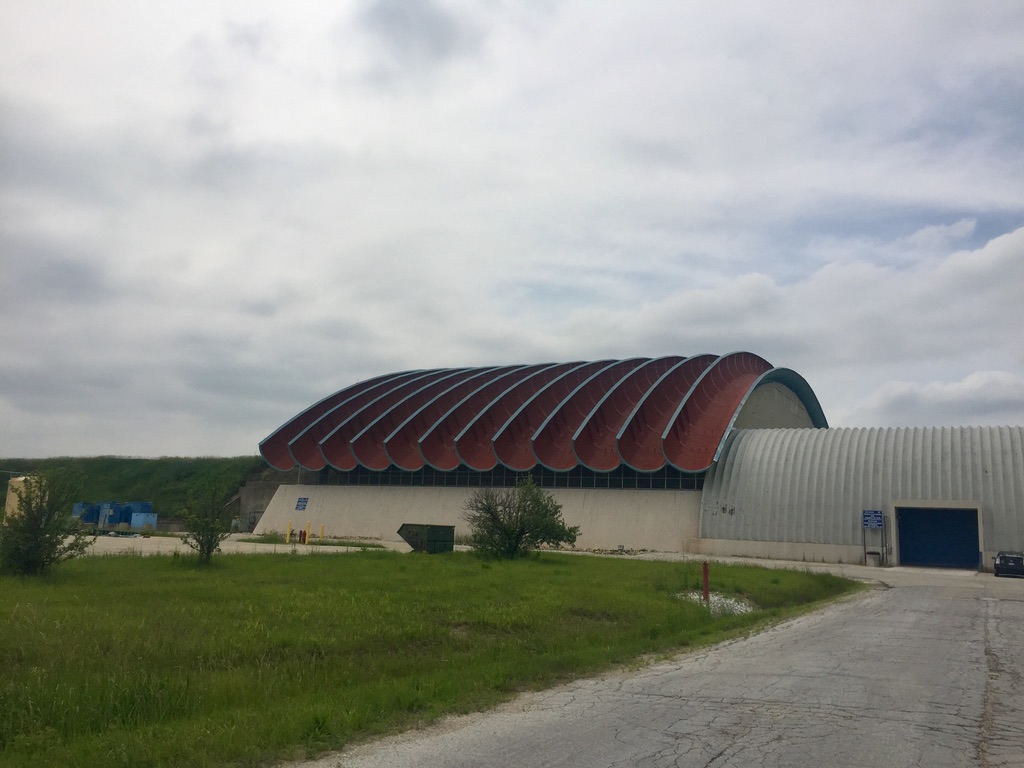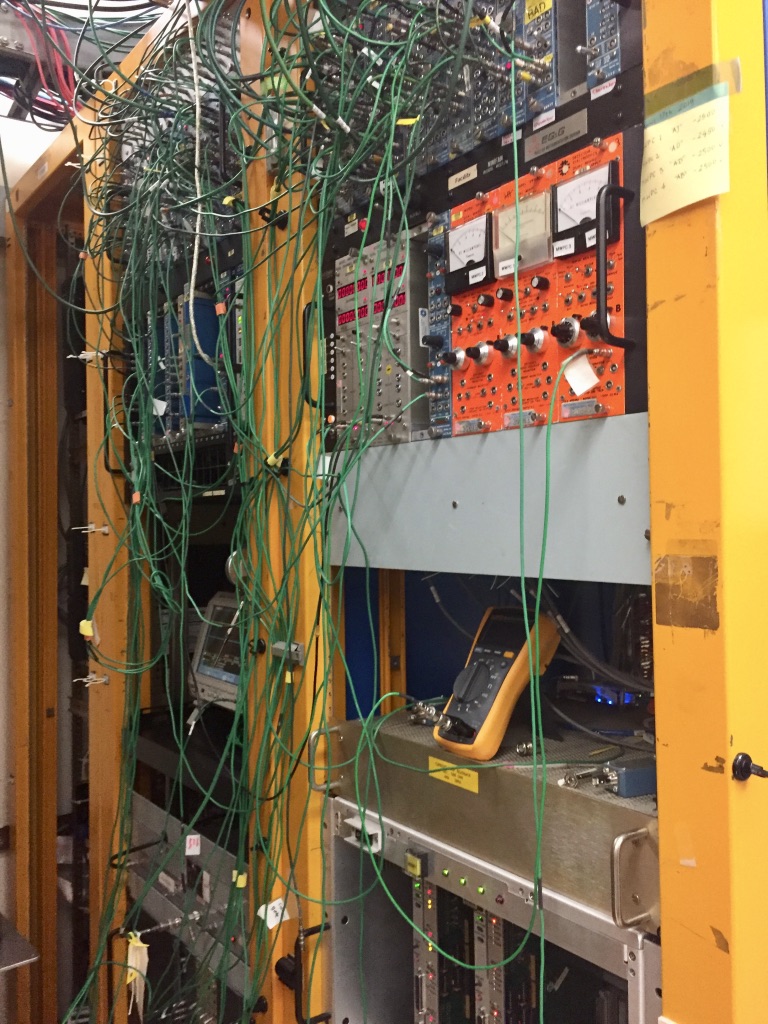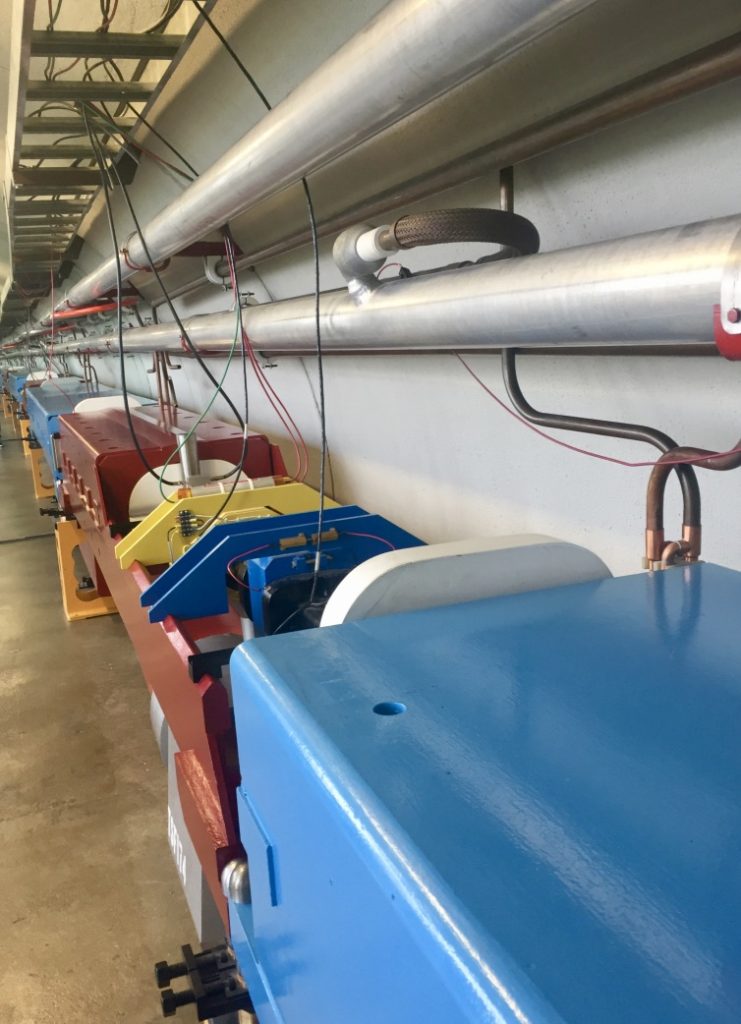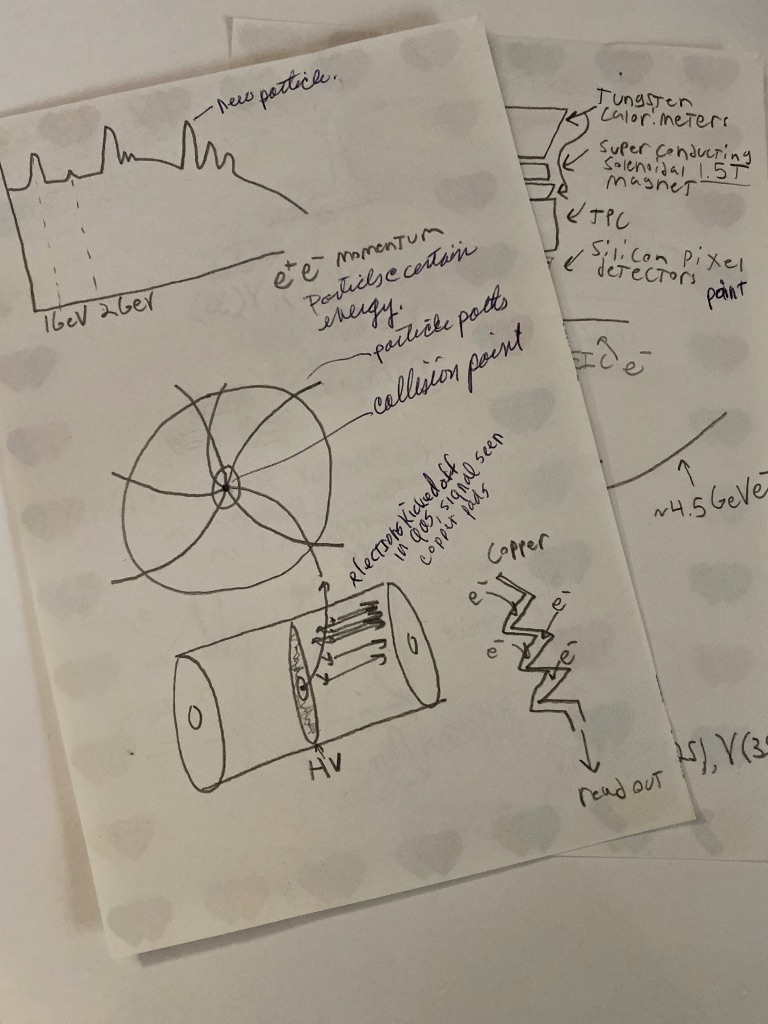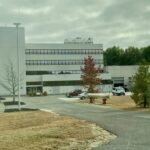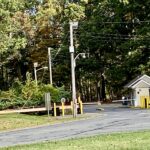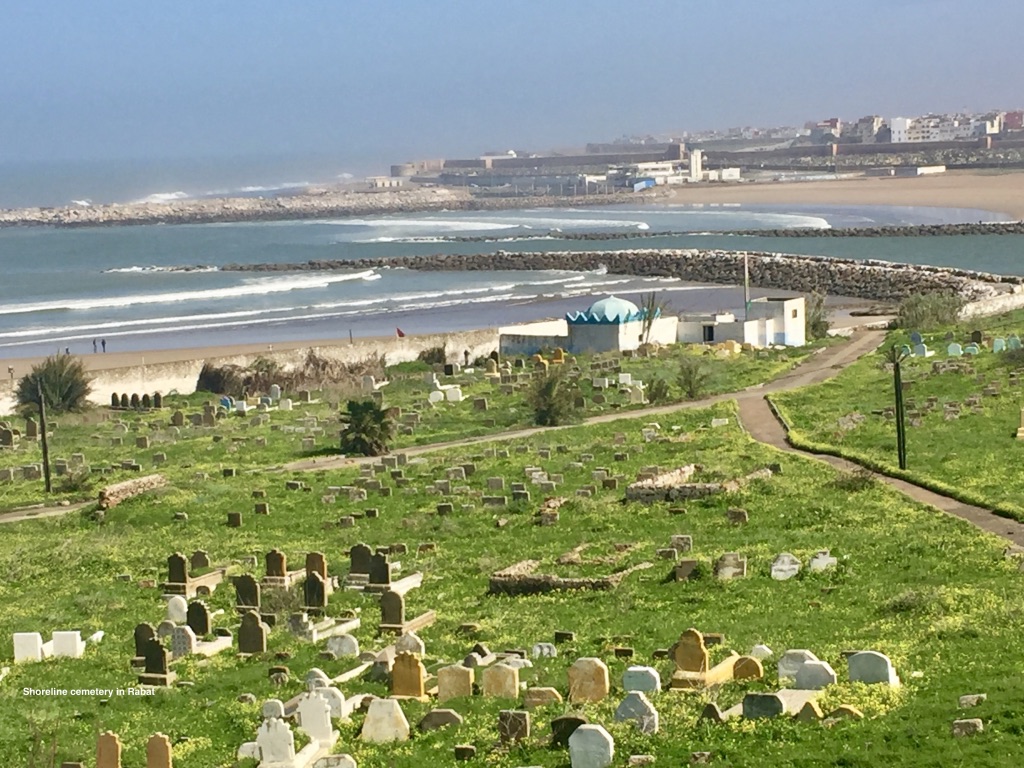In early summer two physics professors each drove a truck from their lab at Stony Brook University in New York to Fermi National Accelerator Lab (Fermilab) near Batavia, Illinois. This was the only place in the U.S. where they could perform their test. It was a fine place. On the road that led them into the lab campus they passed a grove of leafy mature trees. They saw miles of preserved prairie and a pond used for cooling accelerator magnets, but also a home to swans, ducks and geese. They parked the trucks in a sandy lot beside a building they called the hut, also known as the Test Beam Facility. Bunkered by a grassy knoll on one side, the hut could be mistaken for an airplane hangar except for its wavy roof, made with rows of half pipes.
Upon opening the back of the truck, the professors discovered the Time Projection Chamber (TPC) they built had tilted in transit. They had to wait until the next morning to have it removed with a forklift.
“Our test almost ended before it began,” said the graduate student who the professors called in early to help empty the trucks. He lived nearby. “I hope this is not a bad omen,” he said.
Inside the trucks were also parts for two other subsystems to be used in the Super Pioneering High Energy/Nuclear Interaction Experiment (sPHENIX), planned for operation in 2023 at Brookhaven National Lab in New York. The goal of the sPHENIX experiment is to further identify the microscopic structure of matter, and thus “reveal the fundamental nature of the universe”. That’s the phrase used when laymen ask. Among themselves they talk of hadrons, leptons, muons, quarks, gluons – the subatomic particles appearing nearly 14 billion years ago when the universe was first formed. During this test, they are trying to get a clearer image of such particles. To peer closer at the splatter that occurs when such particles collide at high speed and are freed from the force that attracts them to one another. The TPC is the main tracking element in the sPHENIX experiment. Such ambition in particle physics has previously brought society the modern computer chip and medical imaging techniques including the MRI and PET scan.
Better than textbooks
The graduate student hadn’t visited Fermilab since attending Saturday Morning Physics, an eight-week outreach program at the lab, while he was in high school. “It was much better than reading textbooks about physics of the past,” he said. Of the 55,000 students the lab reaches out to annually, he is a success story for what Fermilab and other national laboratories under the Department of Energy Office of Science espouse to be one of their main missions – the education of young scientists. “I’d been here before, but I couldn’t appreciate it for what it is. The knowledge I have now colors it in,” he said.
Near the entrance of Wilson Hall flags from many countries signaled the lab’s international status. Inside, the founding director’s early 1960s aesthetic remains intact. The team received their security badges allowing them access to lab facilities. This test would take a couple of weeks. Last summer a similar test was abruptly halted when a spark fried their electronics.
As experimental physicists, they construct mechanisms and gather data to affirm or negate a scientific theory. It’s the experiment that ultimately reveals the truth behind any theory. But before the actual experiment, they must connect their instruments to a test beam. Knowledge of plumbing, mechanics, and electrical wiring is an important accompaniment to their understanding of sub-atomic particles and magnetic fields.
At the hut the next morning, riggers carefully maneuvered a forklift to unload the TPC. Inside the building, the interior was dark and cavernous. High hanging fluorescent lights did little to brighten what the layman’s eye might see as a cross between a locker room for computer programmers and a mechanic-gone-mad garage. No air conditioner hummed.
Long days and nights
Their work began at 6:15am and ended at midnight. Six undergraduate students had arrived to assist with the test. As if recalling a former self, the graduate student described the undergraduates as “naïve and wide-eyed”. The team positioned two detectors and filled an enclosed module with gas which would be the target for the particle beam line. Many hours were spent connecting wiring.
The following day they worked through the night and into the next morning making sure all the necessary wiring would pass safety standards. Inspectors came and went giving them the go ahead. That afternoon, the graduate student laid his head on the table with his hands as a pillow. “I think it’s much better to let us sleep and work with fresh minds without suffering,” he said. Usually mild mannered and focused, he appeared grumpy. “I need sleep,” he confessed. He had spent the last 32 hours at the Test Beam facility. The environment’s demands seemed to be wearing on him.
Later that afternoon, he became animated while talking to a research scientist from Yale who he learned had assembled systems for the Alpha Magnetic Spectrometer (AMS), a particle physics detector assembled at CERN and mounted on the International Space Station. The graduate student readily engaged in conversation with the Yale scientist who was happy to answer all questions. “He’s seen it all. This is not his first rodeo,” said the graduate student.
The test begins
The pragmatic, hands-on physics professor was hesitant to delegate to his students. Yet it was the graduate student who entered the cage they had concocted to start testing the detectors. The cage was surrounded by chicken wire to prevent the high-voltage from arcing towards anything or anyone. Also, to keep anyone from touching something they shouldn’t. The pragmatic professor looked on.
Detector activity appeared as vertical green lines on an oscilloscope screen outside of the cage. The detector was operating, but the beam was not. They determined the beam was reaching the lab’s linear booster and main injector but not the hut. They waited.
“Beam status?” the pragmatic professor questioned.
“Broken,” murmured the graduate student.
Amidst the gauges, wires, gas, magnets and computer screens the students and professors continued waiting. A meeting was called. “It should last only five minutes but who knows,” said the graduate student. After twenty minutes the meeting was still in session.
At 11:30pm the beam activated. On their third night, all systems were go. They ran the experiment for a week. Preliminary results showed they had exceeded their resolution goals allowing them to see the trajectory of particles more clearly than expected. From that trajectory they could identify the type of particle and how much energy it has. No electronics got burned. No gas leaked. Their data will be analyzed at Brookhaven National Lab. It will be months before they know any confirmed results from the test and years before knowing the results of the upcoming sPHENIX experiment.
The graduate student’s eyes were drooping. “I’m glad everything ran smoothly despite the obstacles. I’m also relieved that I can finally get some sleep.” When he got home, he did not head for bed. He took out a sketchpad and began drawing configurations to explain what he had been working on the past week. His demeanor was not that of a soldier returning from battle, or a football player scoring a touchdown, or even a student making a high grade. He was in a state of contemplation. A putting together of all he had learned. A desire to share it. In this case with me, his mother. After several sketches he pointed his pencil and exclaimed, “A new particle is formed!” He will live his life as a scientist by whatever forces determine such things.

